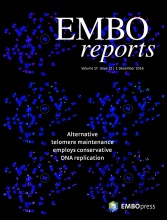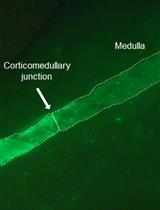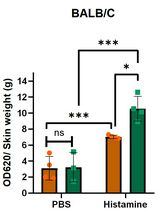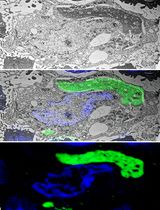- EN - English
- CN - 中文
An ex vivo Perifusion Method for Quantitative Determination of Neuropeptide Release from Mouse Hypothalamic Explants
用于定量测定小鼠下丘脑外植体神经肽释放的离体灌流方法
发布: 2017年08月20日第7卷第16期 DOI: 10.21769/BioProtoc.2521 浏览次数: 7981
评审: Yanjie LiAlessandro DidonnaAnonymous reviewer(s)
Abstract
The hypothalamus is a primary brain area which, in mammals, regulates several physiological functions that are all related to maintaining general homeostasis, by linking the central nervous system (CNS) and the periphery. The hypothalamus itself can be considered an endocrine brain region of some sort as it hosts in its different nuclei several kinds of neuropeptide-producing and -secreting neurons. These neuropeptides have specific roles and participate in the regulation of homeostasis in general, which includes the regulation of energy metabolism, feeding behavior, water intake and body core temperature for example.
As previously mentioned, in order to exert their effects, these peptides have to be produced but also, and mostly, to be secreted. In this context, it is of great importance to be able to assess how certain conditions, diseases, or treatments can actually influence the secretion of neuropeptides, thus the function of the different neuropeptidergic circuits.
One method to assess this is the perifusion of hypothalamic explants followed by quantification of peptides within the collected fractions.
Here, we explain step-by-step how to collect fractions during ex vivo perifusion of hypothalamic explants in which one can determine quantitatively neuropeptide/neurohormone release from these viable isolated tissues. Hypothalami perifusion has two great advantages over other existing assays: (1) it allows pharmacological manipulation to dissect out signaling mechanisms underlying release of different neuropeptides/neurohormones in the hypothalamic explants and, (2) it allows simultaneous experiments with different conditions on multiple hypothalami preparations, (3) it is, to our knowledge, the only method that permits the study of neuropeptide secretion in basal conditions and under repeated stimulations with the same hypothalami explants.
Background
Perifusion has been regularly used to study the pancreatic islets function. Yet, this assay is on principle adaptable to any endocrine tissue and any peptide or protein secretion.
Indeed, different perifusion systems have already been used in the past and remain a valid procedure used by different research laboratories to study the neuropeptide release from hypothalami in various conditions. For example, Callewaere and colleagues published in 2006 a study in which they analyzed the effect of the chemokine SDF-1 (stromal cell-derived factor-1) on vasotocin-induced AVP (arginine-vasopressin) release. In other studies, perifusion of hypothalamic explants has also been used to analyze SRIH (somatotropin release inhibiting hormone, a.k.a. somatostatin) release from perifused hypothalami (stimulation with an extracellular perifusion with 25 mM KCl) (Tolle et al., 2001; Zizzari et al., 2007).
Yet, currently, regarding hypothalamic explants perifusion, no standardized apparatus or protocol is available. We, ourselves, adapted a protocol from the publication by Callewaere et al., 2006.
With this method, we have recently shown ex vivo how, in mouse, the chemokine CCL2 (CC-chemokine ligand 2) is able to reduce the secretion of the orexinergic hypothalamic neuropeptide Melanin-Concentrating Hormone (MCH) and thus participate in loss of both appetite and weight in a context of high-grade inflammation (Le Thuc et al., 2016).
Materials and Reagents
- 15 ml and/or 50 ml centrifuge tubes (Corning, Falcon®, catalog numbers: 352096 and 352070 )
- Petri dishes Ø 100 mm (Corning, catalog number: 3262 )
- 5 ml pipettes (Corning, Falcon®, catalog number: 357543 )
- 10 ml pipettes (Corning, Falcon®, catalog number: 357551 )
- 1.5 ml microtubes (SARSTEDT, catalog number: 72.706 )
- 500 ml Nalgene Filtration Units–PES FASTER membranes–0.2 µm porosity (Dutscher, catalog number: 029667 )
- 0.22 µm filter
- 8-Week old mice
- Minimum Essential Medium (MEM)–no glutamine, no phenol red, no HEPES (Thermo Fischer Scientific, InvitrogenTM, catalog number: 51200046 )
- 2 x 10-3 M Bacitracin (from Bacillus licheniformis) (Sigma-Aldrich, catalog number: 31626 )
- L-Glutamine 100x (Thermo Fischer Scientific, InvitrogenTM, catalog number: 25030024 )
- Bovine serum albumin (BSA) (Sigma-Aldrich, catalog number: A2153 )
- Protease Inhibitor cocktail (CompleteTM, EDTA-free Protease Inhibitor Cocktail) (Roche Diagnostics)
- Potassium chloride (KCl) (Sigma-Aldrich, catalog number: P9541 )
- Glucose (Sigma-Aldrich, catalog number: G8270 )
- Ultrapure water
- ELISA (Phoenix Pharmaceuticals, catalog number: EK-070-47 )
- Hypothalamic explant perifusion medium (see Recipes)
- 1 M KCl (see Recipes)
- Stimulation medium with 60 mM KCl (Iso-osmotic 60 mM KCl, 50 ml) (see Recipes)
Equipment
- Racks for microtubes and 15 ml/50 ml conical tubes (Dutscher)
- P10, P200, P1000 pipetmen (Gilson)
- -20 °C and -80 °C freezer (Sanyo, VWR)
- Hole puncher (Maped–any regular hole punch from any stationary brand should do)
- Carbogen (5% CO2/95% O2) (Linde France, UN 3156)
- Standard Pattern Scissors, Large Loops Sharp/Blunt 14.5 cm (Fine Science Tools, catalog number: 14101-14 )
- Extra Thin Iris Scissors, 10.5 cm (Fine Science Tools, catalog number: 14088-10 )
- Standard Pattern Forceps with serrated tip (Fine Science Tools, catalog number: 11000-13 )
- Dumont #7 forceps with curved tip (Fine Science Tools, catalog numbers: 11271-30 and 11272-30 )
- 2 Thermostatic baths (such as JULABO, model: CORIO CD-B27 )
- Perifusion chambers (BIOREP TECHNOLOGIES, catalog number: PERI-CHAMBER )
- Perifusion chamber filters (BIOREP TECHNOLOGIES, catalog number: PERI-FILTER )
- Perifusion tubing set (BIOREP TECHNOLOGIES, catalog number: PERI-TUBSET )
- Peristaltic pump (high precision multichannel pump, Ismatec)
- Osmometer (Löser Messtechnik, model: Micro-Osmometer Type 6 )
Software
- GraphPad Prism (GraphPad software) or any software for statistical data analysis
Procedure
文章信息
版权信息
© 2017 The Authors; exclusive licensee Bio-protocol LLC.
如何引用
Le Thuc, O., Noël, J. and Rovère, C. (2017). An ex vivo Perifusion Method for Quantitative Determination of Neuropeptide Release from Mouse Hypothalamic Explants. Bio-protocol 7(16): e2521. DOI: 10.21769/BioProtoc.2521.
分类
神经科学 > 神经解剖学和神经环路 > 脑神经
细胞生物学 > 组织分析 > 生理学
生物化学 > 其它化合物 > 肽
您对这篇实验方法有问题吗?
在此处发布您的问题,我们将邀请本文作者来回答。同时,我们会将您的问题发布到Bio-protocol Exchange,以便寻求社区成员的帮助。
Share
Bluesky
X
Copy link















